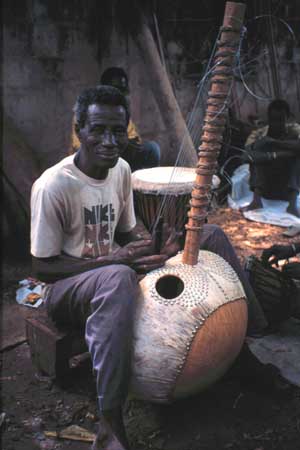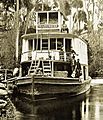Origins of the blues facts for kids

The blues is a special kind of music with a long history. It didn't start on one exact day, but slowly grew over many years. Many people believe its roots come from the continent of Africa.
One of the first times blues-like music was written about was in 1901. An expert studying old things, called an archaeologist, was in Mississippi. He described songs sung by Black workers. These songs had feelings and musical styles similar to the blues we know today.
Contents
What Makes Blues Music Special?
It's hard to find one thing that is true for all blues music. Each time it's played, it can be a little different. But some things are common in most African American music.
Early Sounds of the Blues
The very first blues-like music was a way for people to express themselves. It often used a "call-and-response" style. This is like a musical conversation, where one person sings or plays, and others answer. It didn't have instruments or fancy musical structures at first.
This early music came from "field shouts" and "hollers" sung by enslaved people. These were simple solo songs filled with deep feelings.
African Roots of the Blues
Many parts of the blues, like the call-and-response style, came from music in Africa. When people from Africa were brought to North America as slaves, they brought their musical traditions with them.
Early forms of this music included spirituals and work songs. Spirituals were religious songs. Work songs were sung to help people keep a rhythm while they worked. These work songs also used call and response. For example, a leader might sing a line, and then others would sing a reply.
How Blues Songs Are Built
Most blues songs have four beats in each measure. They often follow a pattern called the "12-bar blues form." This means the song uses three musical phrases, and each phrase is four measures long. Blues music also often uses a special set of notes called the "blue scale."
Images for kids
-
A watercolor painting of a camp meeting around 1839.
-
An illustration from Harper's Weekly in 1865, showing emancipation from the viewpoint of freed people.
-
A photo from the 1890s of the tourist boat Okahumke'e on the Ocklawaha River, with Black guitar players on board.





